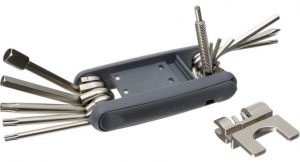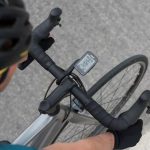We all know how important it is to keep our bikes in good condition – not only does it give you a more enjoyable riding experience, but it also helps to keep you safe in the saddle.
While many bike maintenance tasks and routines are easy to do at home, mistakes can lead to further damage and an unpleasant ride. So, we’re breaking down some of the most common bike maintenance mistakes, and how to avoid them.
Not carrying out regular maintenance tasks
While you may think that ‘bike maintenance’ involves heavy-duty repairs and exciting upgrades, it’s just as important to carry out some regular day-to-day TLC too. Things like cleaning and lubricating can be easy to ignore, especially if you’ve just finished a gruelling ride, but taking the time to care for your bike will help to keep it in good condition long-term.
Dirt and grease can become stuck to the frame, forks, brakes, and chain, so removing it will keep your bike healthier and your rides more enjoyable. You should try to clean your bike on a regular basis, and after any particularly grimy ride – just be sure to avoid using a pressure washer so you don’t damage the delicate components of your bike.
You should also be sure to re-lubricate your bike chain after cleaning, to make sure that your drivetrain doesn’t seize up or rust. To do this, just slowly rotate the pedals backwards and apply lubricant to each link, then wipe away any excess with a cloth.
For more regular maintenance tips and guidance, you can check out our more in-depth guide to bike maintenance here.
Not checking your tyres
Your tyres are the only part of your bike that touches the ground, so it’s important that you keep them in good condition. Before every ride, you should check the health of your tyres – this includes a visual inspection for any punctures or damage, checking your tyre pressure and altering if needed, and assessing whether your tyre type is suitable for the weather conditions and the type of riding you’re doing.
Both overinflated and underinflated can lead to problems mid-ride. High tyre pressure can cause a blowout and will increase rolling resistance, which can cause an uncomfortable ride. Low tyre pressure, on the other hand, can lead to pinch flats, which occur when your inner tube becomes pinched between your rim and a hard object.
To make sure that your tyres are correctly inflated, you can find the right pressure (PSI) on the sidewall of your tyre.
Improper storage
Where you keep your bike while you’re not riding is just as important as how you treat it whilst you’re riding. Improper storage can lead to future problems, and there are a few key things to avoid.
While your storage solutions will depend on the space you have available, you should try not to keep your bike outside long-term. Not only is it within easier reach of thieves and vandals, but it’ll also be exposed to the elements. Wind, rain, and even direct sunlight can cause future problems if you leave your bike exposed to them, including rust, seizing, and degrading plastic. If you do have to store your bike outside, you should use a bike cover to offer some protection from the weather.
Resting your bike on its drive-side – where the derailleurs, cassette, and cranks are – can also lead to damage, even if you’re just laying it down mid-ride. Over time the derailleur hanger can become bent, leading to poor shifting performance.
Using the wrong tools
There are many specialised kits and tools for working on a bike. If you haven’t got the right tools, then you’ll struggle to complete repair jobs or carry out routine maintenance well.
One thing you should always have handy is a high-quality set of Allen keys or a multi-tool that includes a set. Many basic bits of maintenance and repair tasks can be completed with these, and they’re lightweight enough to carry with you on rides to tackle hiccups on the go.

A bike repair stand is also something you shouldn’t overlook; it holds your bike in the air and allows you to stand it in the perfect position to give you better access to the area you’re working on. Not only does this make routine maintenance and repair jobs much easier, but it also helps to prevent any damage that might occur from leaning your bike in an awkward position to work on a hard-to-reach spot.
You’ll also want to invest in two different pumps. It’s always worth having a hand pump with you whilst you’re out and about in case your tyres need a top-up mid-ride. They’re designed to be small, compact, and lightweight, so they can fit snuggly into a pannier bag and won’t hinder your ride. However, we’d also recommend having a larger floor pump at home. Not only are floor pumps more powerful, giving you better and faster inflation, but they often come with a pressure gauge which is useful for getting really accurate inflation.

Other worthwhile tools include a spoke key, cable cutters, a torque wrench, and tyre levers. You can find our complete guide to bike maintenance, including everything you need in your tool kit, here.
Not knowing your limits
Many common bike maintenance tasks can be carried out right in your garage, but it’s important to know when a job is more advanced than your skillset. Replacing or fixing something incorrectly can lead to further damage down the line or even a risk to your safety in the saddle.
If there are any repairs or maintenance tasks that you’re not sure about, then Halfords is here to help. Our trained technicians are on hand to service and repair your bike to get you back on two wheels in no time.
If you just want the peace of mind that everything’s working as it should, we also offer a Free Bike Health Check. This 32-point pre-repair assessment is carried out while you wait, to spot any problems or issues before they become serious.
So, those are the maintenance mistakes it’s best to avoid if you want a pristine, working bike that’s fun to ride.
For more tips and tricks, head over to the cycling help & advice section of Halfords.com, or browse our full range of cycling tools and accessories.
You want quality cycling, you want Halfords.


